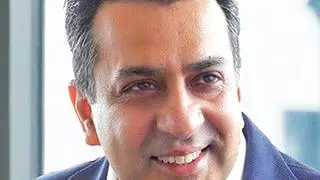US-based chip maker Qualcomm is at the forefront of ensuring that mobile users have access to more affordable and efficient phones. The company’s chipsets are used by all major brands, including Apple, Samsung, HTC and even Indian brands like Micromax. BusinessLine met Avneesh Agrawal, President, Qualcomm India and South Asia, to discuss trends in India. Edited excerpts:
Are you happy or concerned with the overall growth in data usage in India?
India is still a very large 2G and feature phone market. Over time there will be enough people who understand what data can do and how to use smartphones. That’s how things play out and so I am not concerned. We are confident that India will be a huge market for data services.
Do you see the need for new socially relevant applications to drive data consumption?
There is no one application that serves all purpose. Every user has his or her preference. I really don’t think we should expect some new blockbuster applications. The fact is consumer internet is coming from mobile. We are beginning to see lot of localised content and applications.
How crucial is it that the Government makes available more spectrum for 3G services?
If you look at any growth projection for data services, a lot of growth will come from 3G. In this regard, the 2100 MHz band has global ecosystem in terms of devices. Every 3G device supports 2100 MHz band. Global average for 3G spectrum is 60 MHz and India has not allocated even half or one third of that.
Networks capacity gets crunched if we won’t allocate more spectrum. It will be a disservice to the country if we don’t make available more spectrum. Need of the hour is to identify more 3G spectrum.
How do see uptake of 4G services in India?
Globally transition to 4G has been strong. This year China also launched 4G. In India, Airtel has done some launches. India will see the converged use of 1800MHz and 2300 MHz for 4G. Going forward most device launches will have mixed band.
What future do you see for CDMA players?
CDMA has been successful for data services although smartphone adoption has not been as we would have liked. At some point CDMA will evolve to 4G. The 800 MHz can be technically used for 4G but ecosystem has to mature which will take a few years.
How does a company like Qualcomm ensure that there are enough applications for data usage?
We have an active venture programme. There’s a vibrant start-up ecosystem which is in the best position to judge what consumers want. The venture programme is our primary means to promoting new use cases. We won’t rule out being a direct investor in niche areas but for mass market applications we can’t do it alone.
How can India promote electronic manufacturing?
India has the market and we have design talent. What promotes manufacturing is a strong ecosystem of components makers. The more component gets manufactured locally the more practical it becomes to design a phone locally.
There’s a lot of emphasis by the Government on getting players to invest in semiconductor fabrication units. Do you see a potential here?
Fabrication units require massive investment. I think India should work out on less complex fabrication units that’s easier to set up. Then we can always move up the value chain.
How is India as market for Qualcomm?
It’s a fast growing market, but it’s never fast enough. All trend lines are positive so we are bullish on this market.
Correction
We misspelled Qualcomm India President Avneesh Agrawal's surname, as Agarwal. This has been corrected in the headline and text.








Comments
Comments have to be in English, and in full sentences. They cannot be abusive or personal. Please abide by our community guidelines for posting your comments.
We have migrated to a new commenting platform. If you are already a registered user of TheHindu Businessline and logged in, you may continue to engage with our articles. If you do not have an account please register and login to post comments. Users can access their older comments by logging into their accounts on Vuukle.